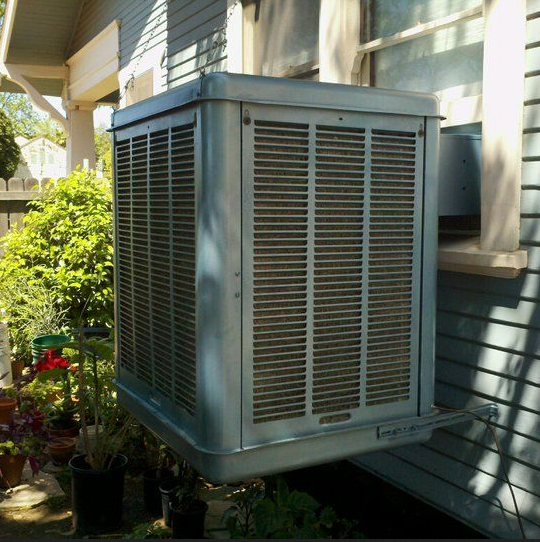It was definitely summertime in Arkansas. Sweat cascaded down my forehead and formed pathways down my back, drenching my clothing. Noel Coward stated it well; nothing but mad-dogs and Englishmen would be ignorant enough to venture into the midday sun and here I was out mowing my yard. How in the world did we survive before air conditioning?
Air conditioners are a relatively recent solution to providing relief from Southern summers. Invented in the early 1900’s by Willis Carrier, they would not become economically feasible for use until nearly a century later. The 1932 price for an individual window unit in 1932 would cost the equivalent of $200,000, a sum available to only the wealthiest of Americans.

Early pioneers used natural methods to cool their homes. Dogtrots, openings between rooms of the house, allowed air to circulate through the central part of the home. Large porches spanned the front of the homes and allowed people to sit outside, visit in the shade, and catch the occasional breeze. Kitchens were often build separate from the homes to prevent trapping the heat from the wood cooking stoves. Windows, covered by screen, were thrown open to catch any cross-breezes that might wonder through. Church meetings were often held in brush arbors during the summer. With four-sides open to the air and the roof covered by tree branches, the long-services were at least endurable. Funeral homes supplied paper fans to stir the air and, if one was energetic enough, could create enough breeze to evaporate the profuse sweating and create temporary cooling. At night, many families would place beds on screen-covered porches and sleep outside, hoping for a few hours of relief from the unrelenting heat of the day.
By my childhood, electricity allowed for the use of fans which would circulate the hot air through the homes. As I began my teaching career, we would cool the 95 degree plus rooms by opening windows and turning on a multitude of fans. On a particularly scorching day, a fellow teacher pranked me by sending a “delivery” from the office. The student that delivered the gift set it on my desk and left without a word. I instantly realized my mistake as I attempted to move the box. Styrofoam delivery chips tumbled from beneath the box, weighted down by the rock my friend had conveniently placed on top of the chips. Caught up in the breeze from four large circulating fans, my room soon resembled a huge snow globe, complete with twenty students chasing in swirling chips.
Many homes in the 60’s and 70’s were equipped with window water coolers. Instead of lowering humidity, these huge air circulators were fueled by filling the bottom of the unit with water. The fans picked up moisture and large water droplets and hurled them across the room. For those seated in the air flow, it was a glorious moment as the wet air flowed around you. Soon the room reached 100 percent humidity and water began to drip from the ceiling and run down the walls. Dye in the wall paper would began to dissolve and the pastoral scenes that once covered the walls would become Picasso like versions of modern art with colors and designs in free-flow down the wall. On particularly hot days, dad would buy a 50-pound block of ice to sit inside the water cooler. Pure bliss for about thirty-minutes until the ice melted!

People from that period of time remember going to a café or store and reading the huge signs on the windows or doors announcing that the facility was actually cooled by AIR CONDITIONING.
Perhaps we have become soft. My friends will often bring throw blankets to teacher meetings, I haven’t seen a funeral home fan in years, and even school busses are air conditioned. Like my Latin-American friends, I find it more convenient to siesta in the cool during the hottest part of the day and I freely admit I love my AC unit






